hbs digestive system
1/53
There's no tags or description
Looks like no tags are added yet.
Name | Mastery | Learn | Test | Matching | Spaced |
|---|
No study sessions yet.
54 Terms
Enzyme
A biological catalyst that speeds up chemical reactions in the body, particularly in the breakdown of food during digestion.
Substrate
The substance on which an enzyme acts, facilitating its breakdown or transformation during digestion.
How are enzymes named?
Enzymes end in -ase
Active Site
The specific region of an enzyme where the substrate binds and the reaction occurs.
Induced Fit
A model describing how enzymes change shape to fit the substrate more snugly upon binding, enhancing the reaction.
Lock and Key
A model that explains how enzymes and substrates fit together precisely, similar to a key fitting into a lock, without changing shape.
Maltose
A disaccharide sugar formed from two glucose molecules.
Lactose
A disaccharide sugar composed of one glucose and one galactose molecule.
Sucrose
A disaccharide sugar made up of one glucose and one fructose molecule.
Coenzyme
An organic, non-protein compound that is necessary for the functioning of an enzyme, often acting as a carrier for chemical groups or electrons.
Cofactor
An inorganic, non-protein substance that assists enzymes in catalyzing reactions, which can be either metal ions or organic molecules.
Why do enzymes only work on their specific substrate?
Enzymes have a specific active site that only fits particular substrates, allowing for selective catalysis. This specificity is due to the unique shape and chemical environment of the enzyme.
What would happen if there were no enzymes in the human body?
Without enzymes, chemical reactions in the human body would occur at a much slower rate or not at all, leading to various metabolic dysfunctions and life-threatening conditions.
Why is important to eat a balanced diet containing essential vitamins?
These nutrients act as coenzymes, crucial for activating enzymes that perform various metabolic processes.
Ingestion
is the process of taking in food and liquids through the mouth, which begins the digestive process.
Propulsion
is the process of moving food through the digestive tract, facilitated by muscle contractions.
Mechanical Digestion
involves the physical breakdown of food into smaller pieces, increasing the surface area for enzymes to act on during chemical digestion.
Chemical Digestion
is the process by which enzymes break down food into smaller molecules that can be absorbed by the body.
Absorption
is the process by which nutrients from digested food are taken up into the bloodstream or lymphatic system for distribution to the body's cells.
Defecation
is the final process of the digestive system, where waste products are excreted from the body through the anus.
What is the oral cavity and what does it contain?
The oral cavity is the first part of the digestive system, containing the mouth, teeth, tongue, and salivary glands. It is responsible for the mechanical and chemical breakdown of food before swallowing.
What is the function of the salivary glands?
The salivary glands produce saliva, which contains enzymes that initiate the digestion of carbohydrates and helps lubricate food for easier swallowing.
What is the function of the tongue?
The tongue is a muscular organ in the oral cavity that aids in the manipulation of food during chewing and assists in swallowing. It also contains taste buds that allow for the perception of different flavors.
What is a bolus?
A bolus is a rounded mass of food that has been chewed and mixed with saliva, making it easier to swallow.
Where are the soft and hard palate located and what are their functions?
The hard palate is located at the front of the roof of the mouth, providing structure and separating the oral cavity from the nasal cavity, while the soft palate is at the back, helping to close off the nasal passages during swallowing and playing a role in speech.
what mechanical and chemical digestion occurs in the oral cavity?
Mechanical digestion involves chewing food with the teeth, while chemical digestion begins with enzymes in saliva breaking down carbohydrates.
What mechanisms are in place to make sure food doesn’t “go down the wrong tube” and into the windpipe?
The mechanism that prevents food from entering the windpipe is the epiglottis, a flap of tissue that covers the trachea during swallowing. Additionally, coordinated muscle contractions in the pharynx help direct food into the esophagus.
What is peristaltic movement and how does it function in the esophagus?
Peristaltic movement is a series of wave-like muscle contractions that moves food through the esophagus and into the stomach. It functions by sequentially contracting and relaxing muscles in the esophageal wall, ensuring smooth passage of food.
Does any digestion of food occur in the esophagus?
No, digestion does not occur in the esophagus. Its primary role is to transport food from the mouth to the stomach through peristaltic movements.
What are the primary functions of the stomach?
The primary functions of the stomach are to store food, mix it with gastric juices for digestion, and gradually release the partially digested food into the small intestine. It also plays a role in the breakdown of proteins and the activation of digestive enzymes.
What is chyme and how does the stomach mix this material
Chyme is a thick, semi-liquid substance formed in the stomach when food is mixed with gastric juices. The stomach mixes chyme by rhythmic contractions of its muscular walls, ensuring thorough mixing and breakdown of food.
What role does the stomach play in decontaminating the incoming food matter?
The stomach plays a crucial role in decontaminating incoming food matter by using its acidic environment, created by gastric acid, to kill harmful bacteria and pathogens.
What cells in the stomach function to form enzymes and acids?
Gastric glands contain different cell types, including parietal cells that secrete hydrochloric acid and chief cells that produce digestive enzymes like pepsin.
Why doesn’t gastric juice digest inside of the stomach?
Gastric juice does not digest the stomach lining due to the presence of a protective mucosal barrier that prevents the acid and enzymes from damaging the stomach's epithelial cells.
What are sphincters and how are they related to the stomach?
Sphincters are muscular valves located at the openings of the stomach, controlling the passage of food and digestive juices into and out of the stomach, ensuring proper digestion and preventing backflow.
What mechanical and chemical digestion occur in the stomach?
Mechanical digestion involves the churning of food, while chemical digestion occurs through gastric juice, breaking down proteins and activating enzymes.
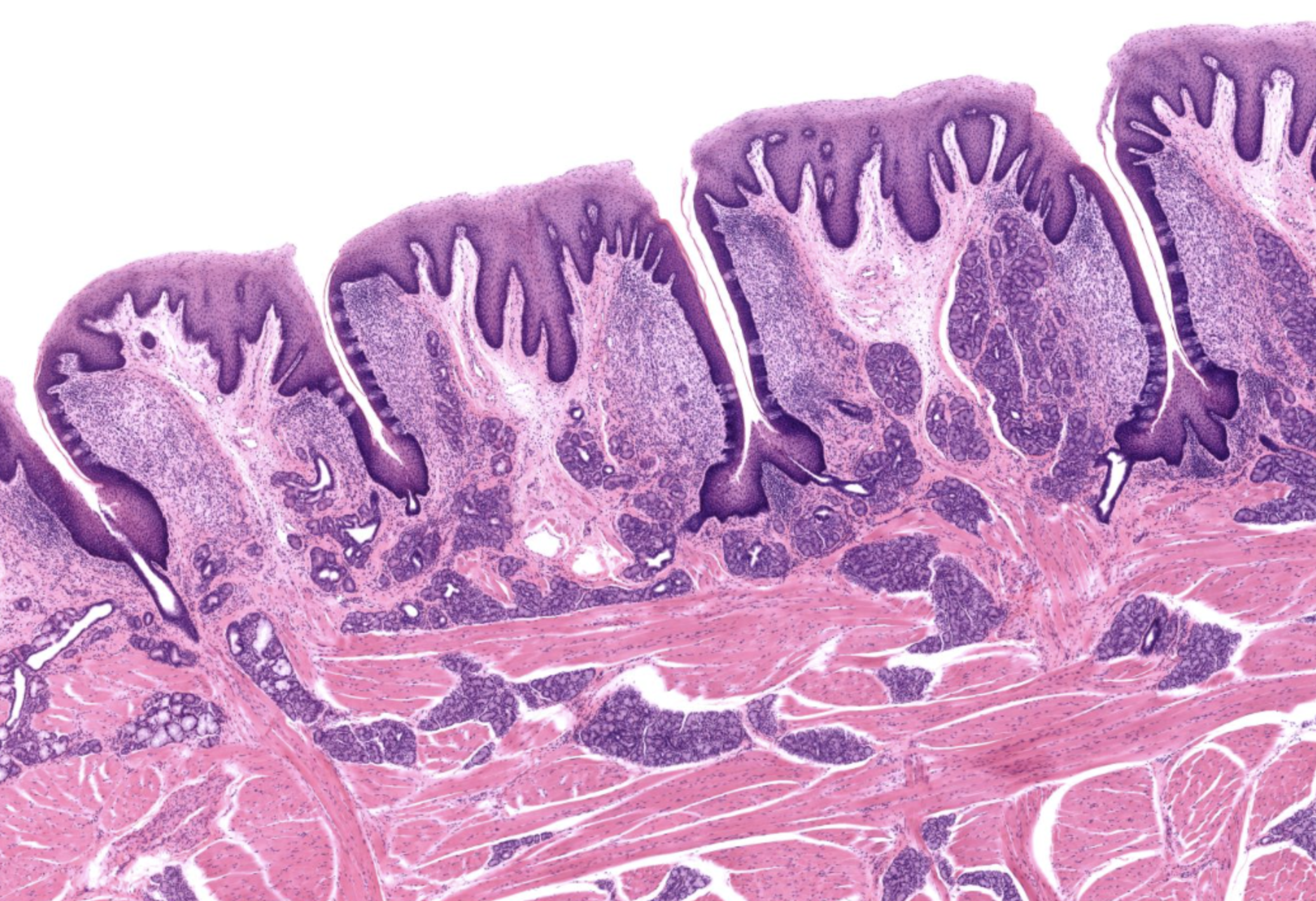
Foliate Papillae in Tongue
Perceive taste
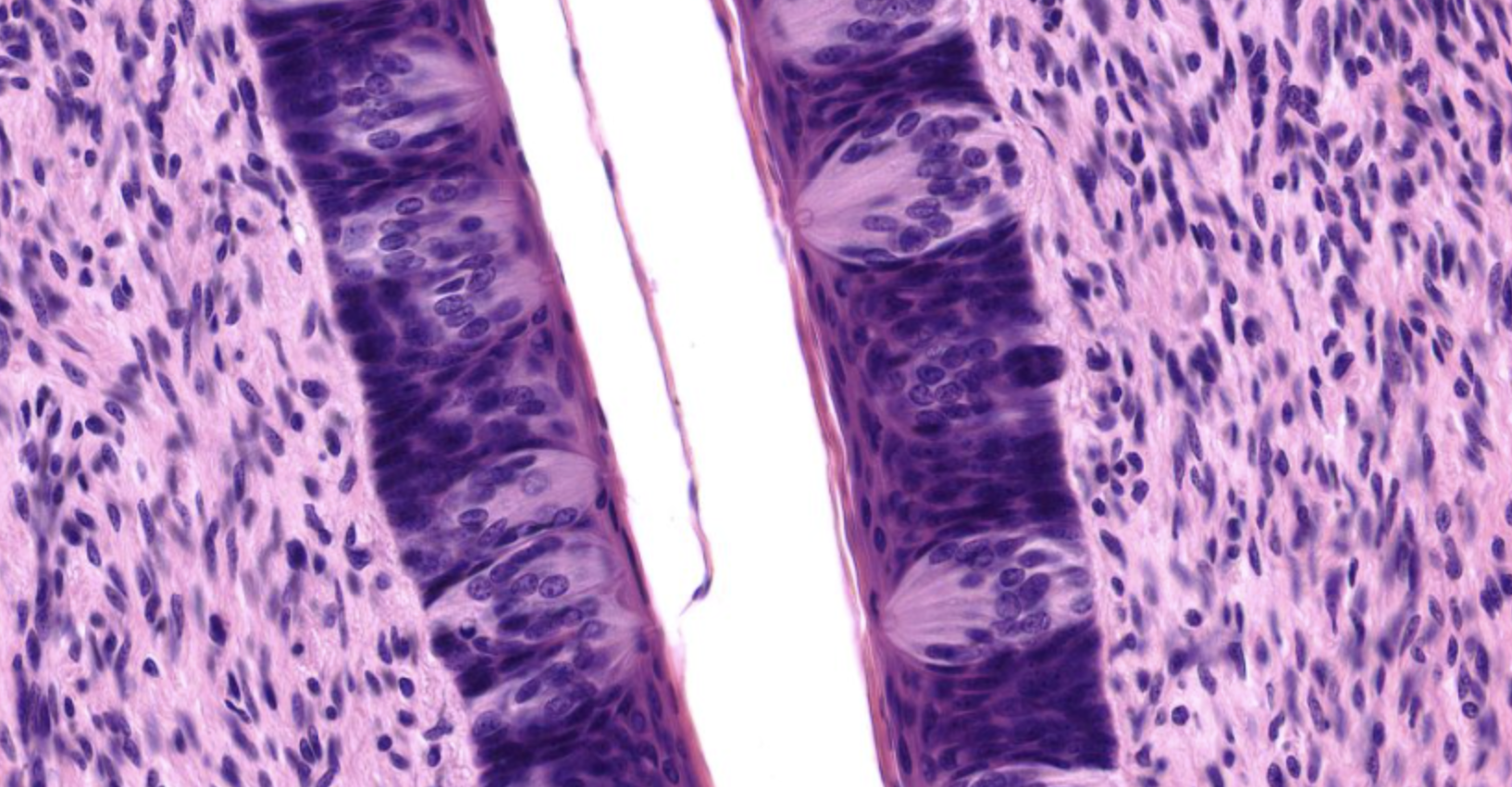
Taste Buds in Tongue
Detects taste and send signals to the brain for flavor identification.

Gastric Pits in Fundic Stomach
Protects the underlying glands, neutralizes stomach acid, and prevents the stomach lining from being damaged by acid digestion.
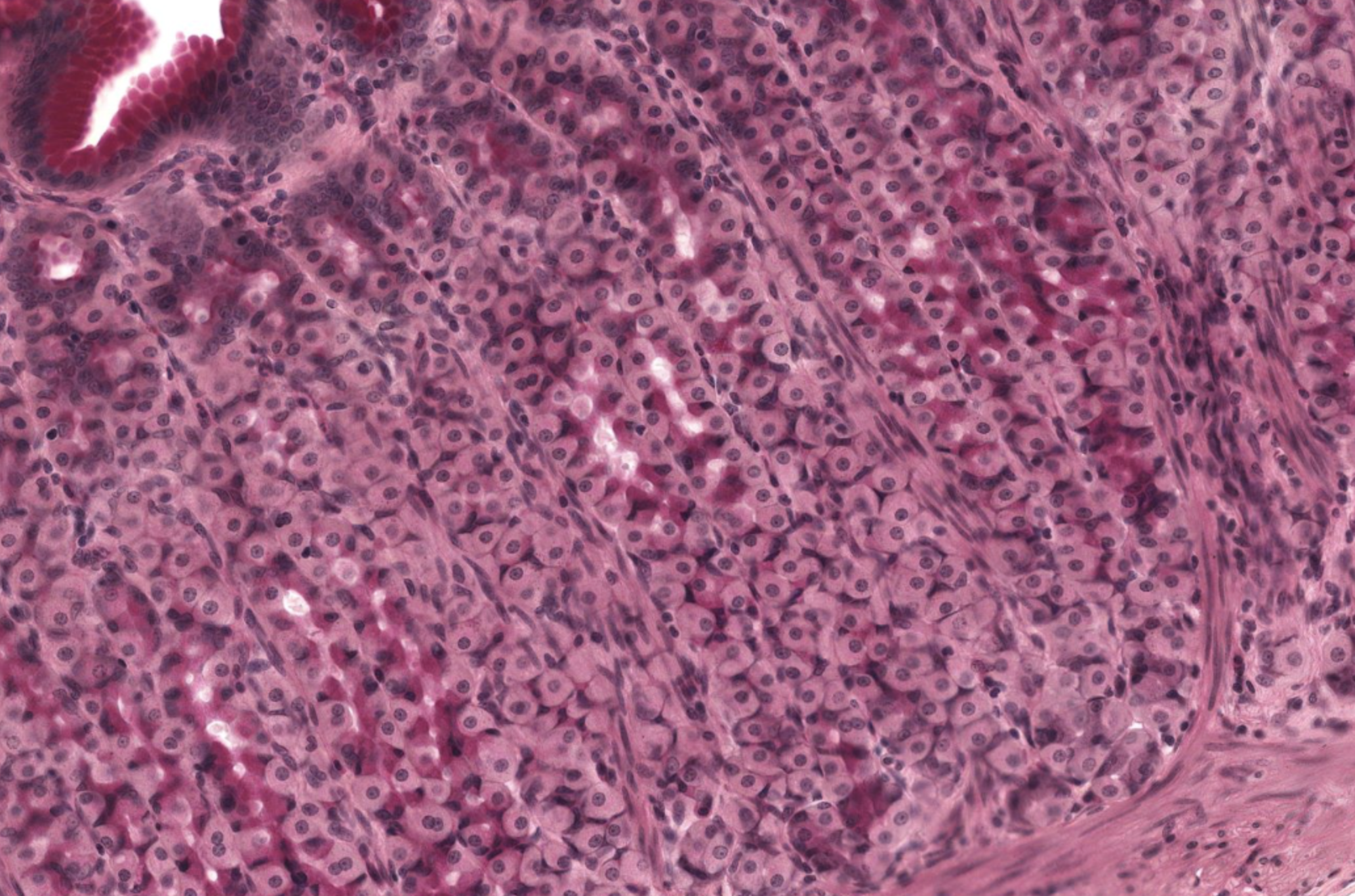
Fundic Glands in Fundic Stomach
Secretes gastric juice, which is essential for digestion.
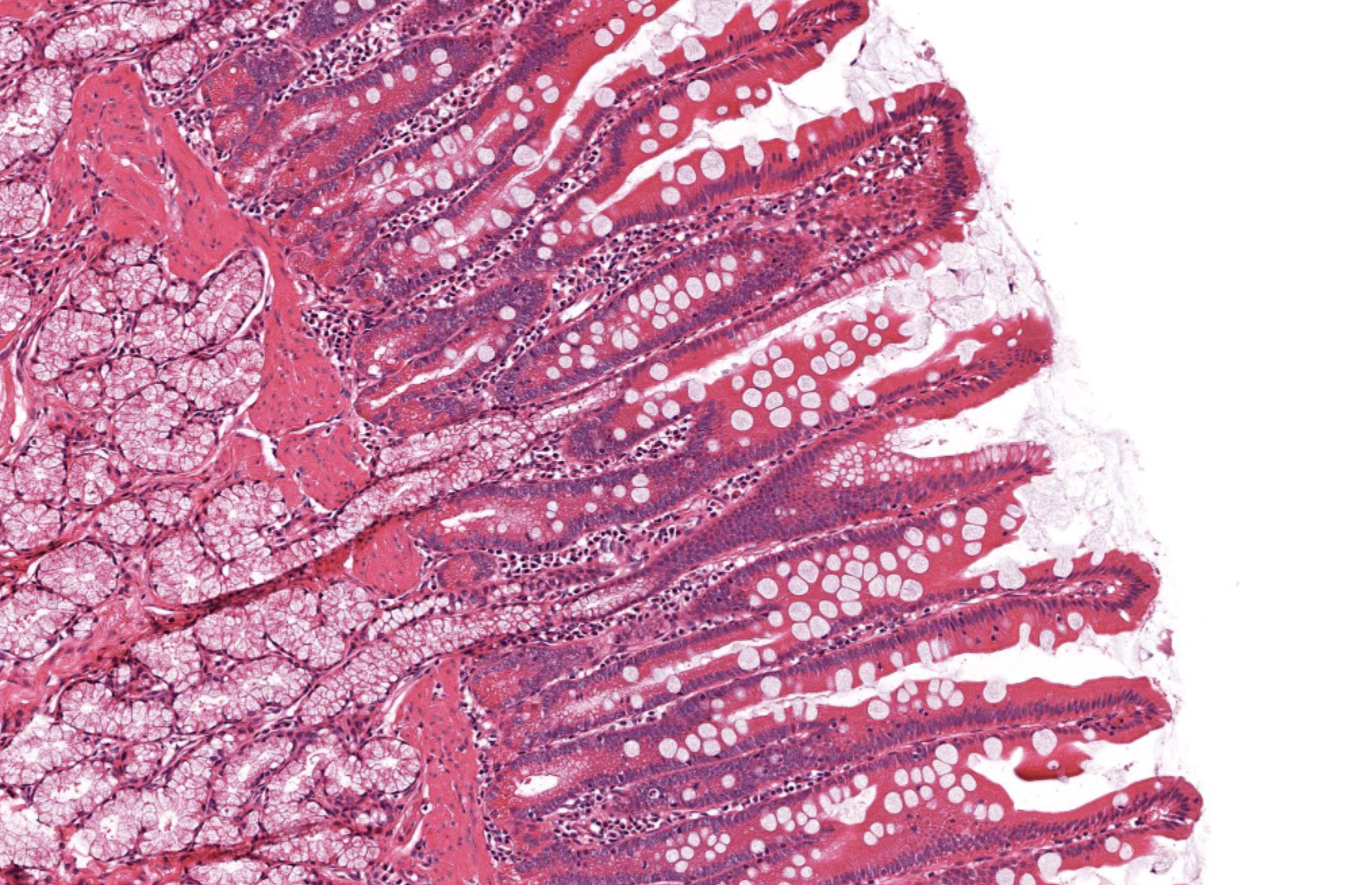
Mucosa in Duodenum
Digestion and absorption
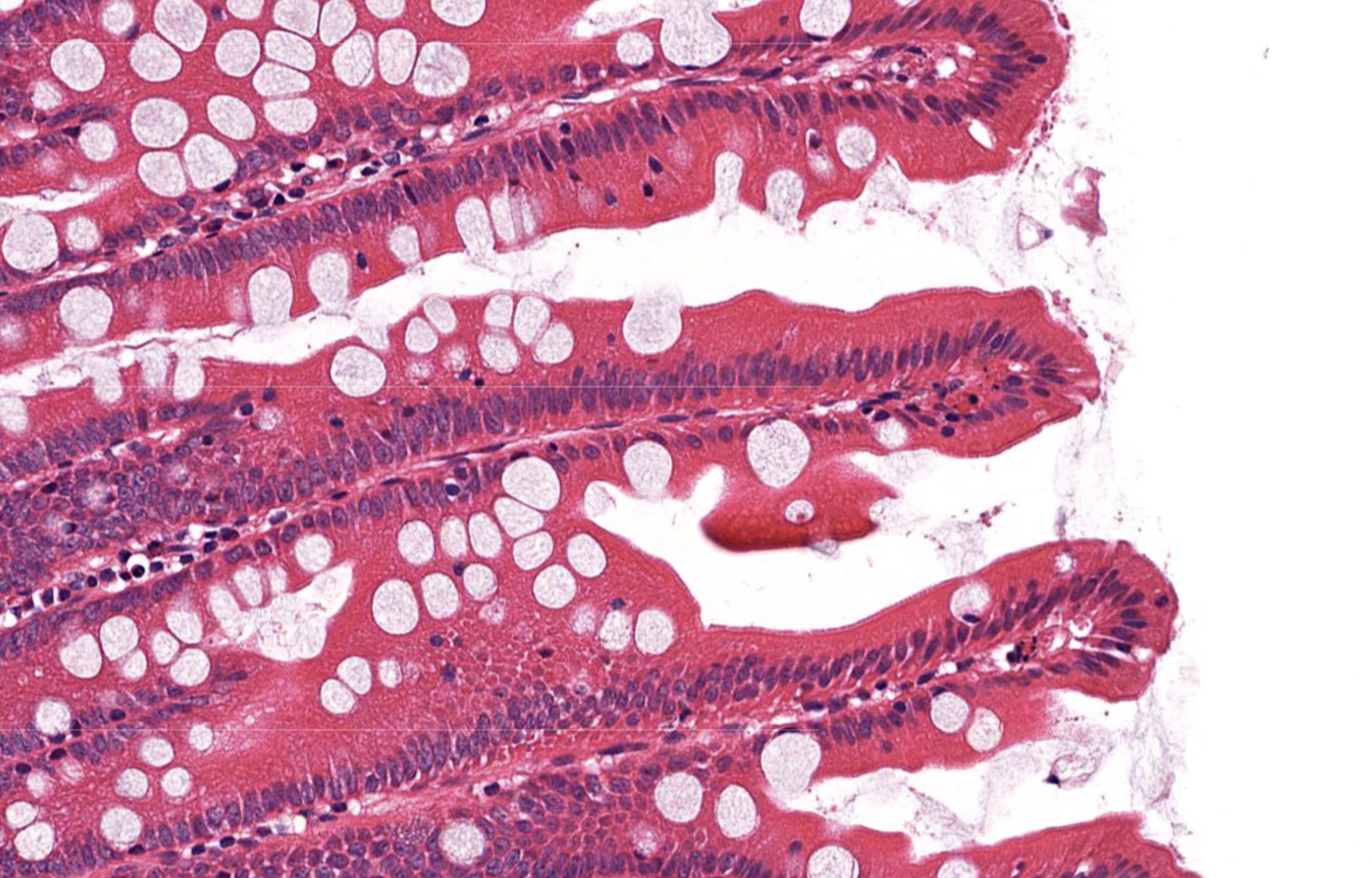
Villi in Duodenum
Increases surface area of duodenum, allowing for it to absorb more nutrients than if it were flat.
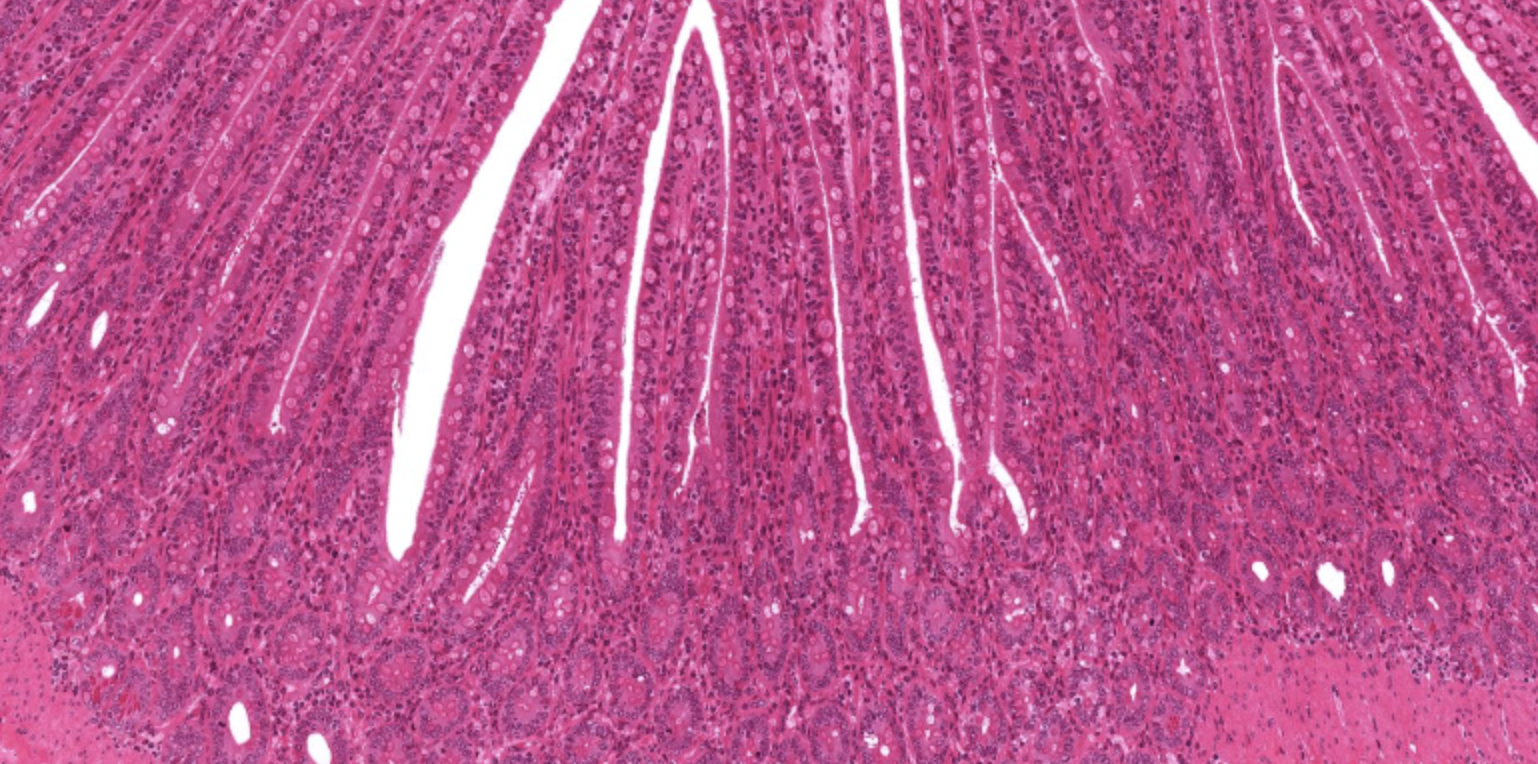
Mucosa in Jejunum
Maximal absorption
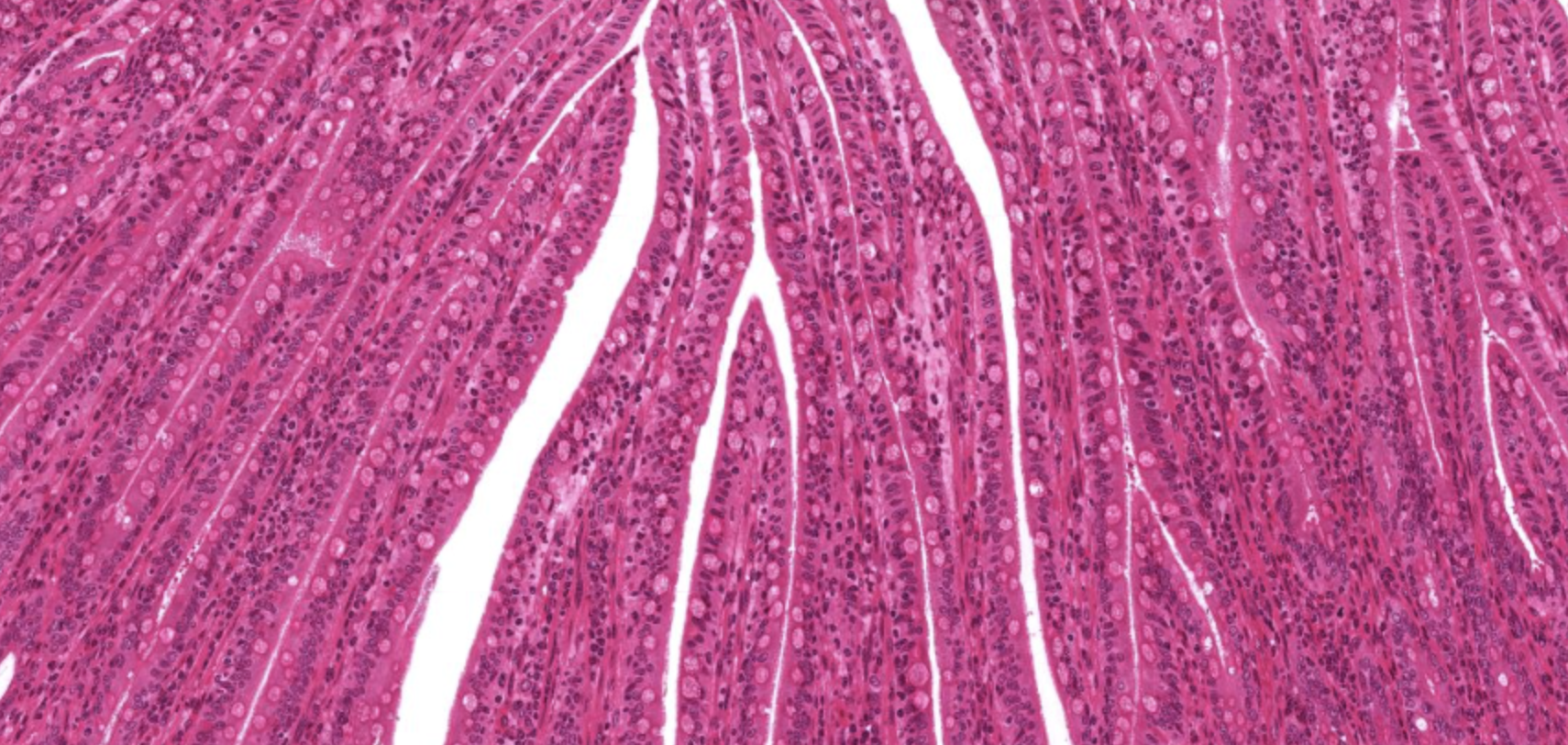
Villi in Jejunum
Absorbing nutrients from digested food and delivering them to the bloodstream.
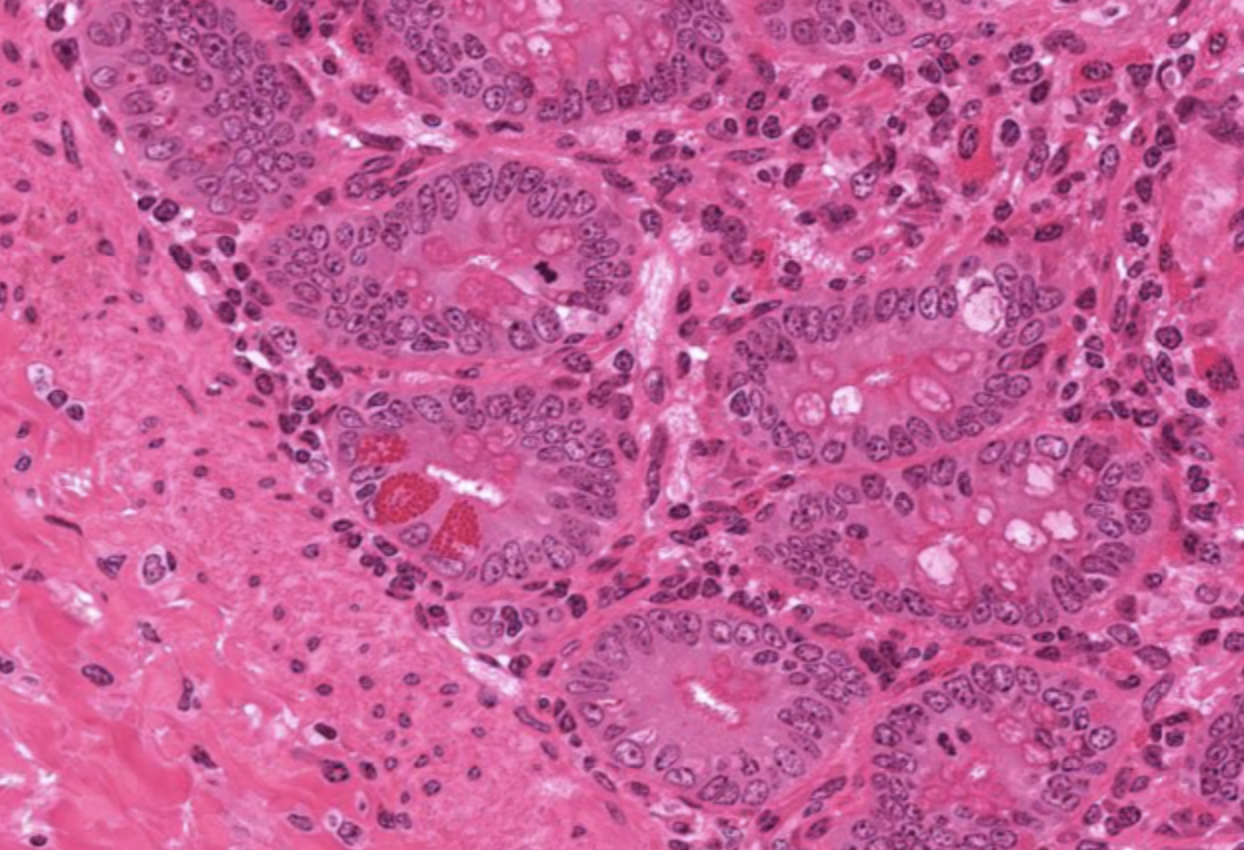
Crypts in Jejunum
Maintaining intestinal homeostasis and facilitating nutrient absorption.
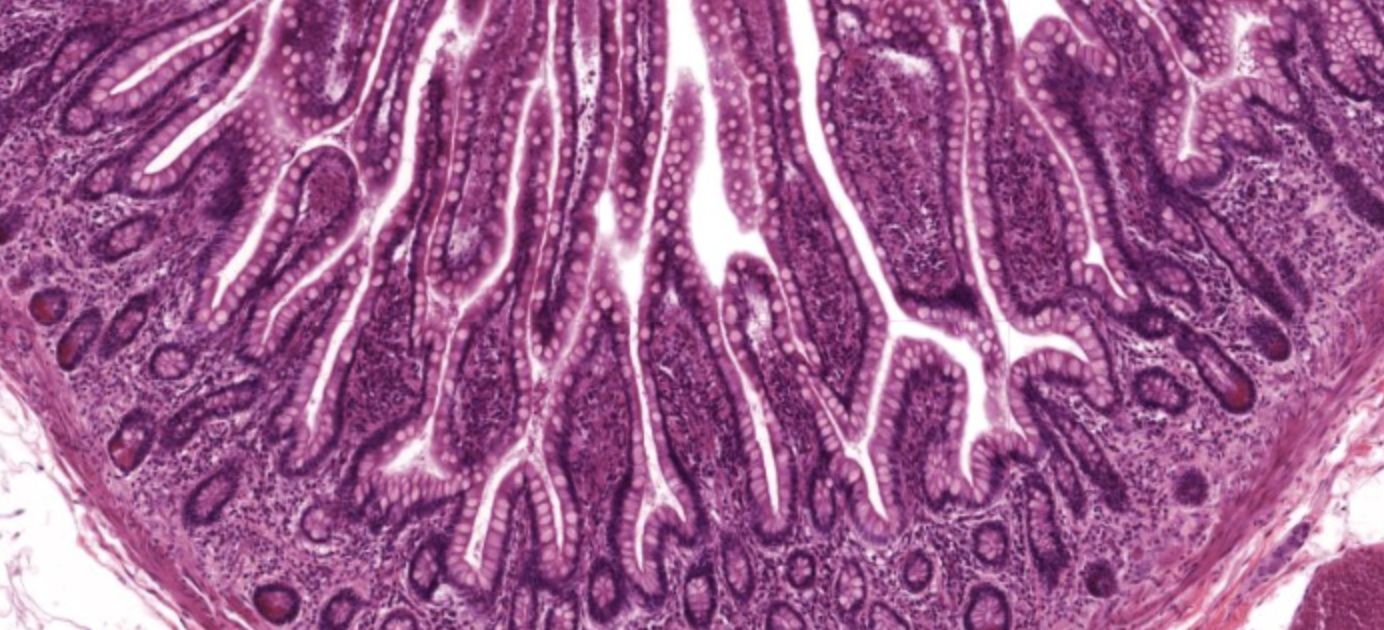
Mucosa in Ileum
Nutrient absorption and immune defense.
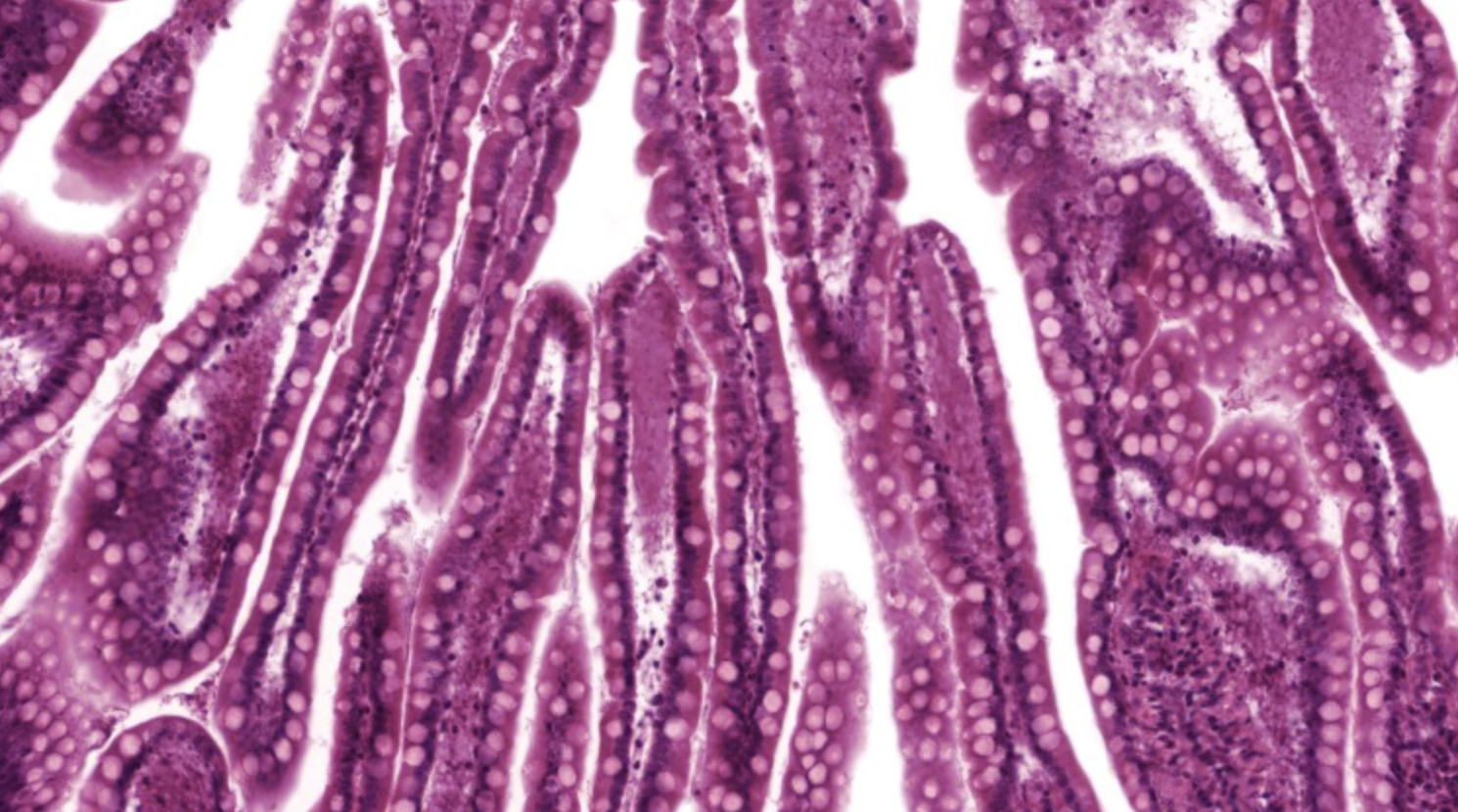
Villi in Ileum
Absorbs the remaining nutrients from digested food, particularly vitamin B12 and bile acids that weren’t absorbed in the earlier parts of the small intestine.

Islet of Langerhans in Pancreas
Regulates blood sugar levels and overall nutrient homeostasis. They produce and secrete hormones like insulin, glucagon, and somatostatin.
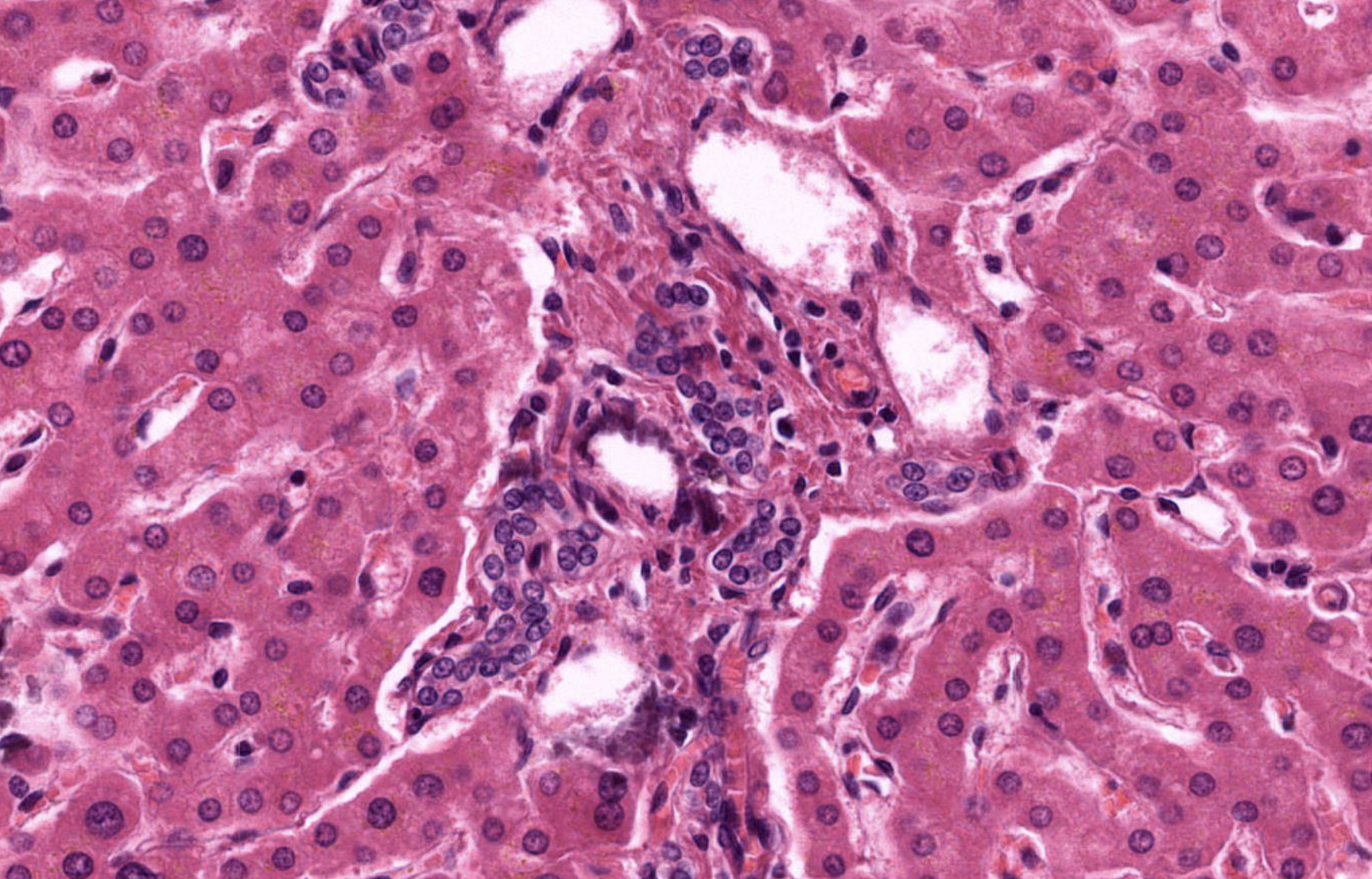
Portal Vein in Liver
Transports blood from the GI tract, spleen, pancreas, and gallbladder to the liber for processing. This blood carries absorbed nutrients and toxins, allowing the liver to filter and metabolize them before they enter the systemic circulation.
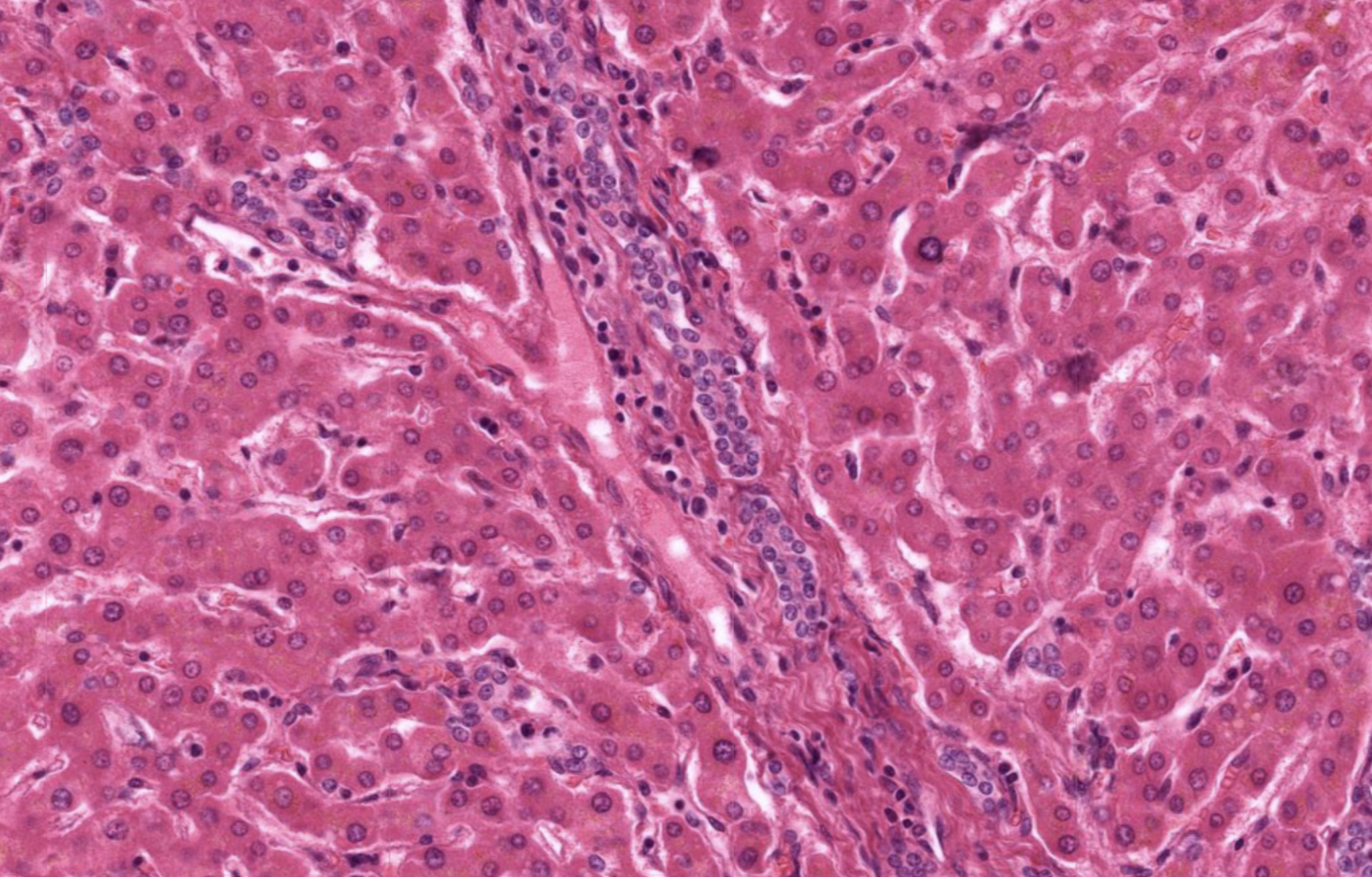
Bile Duct in Liver
Carries bile between these organs, facilitates the digestion and absorption of fats.
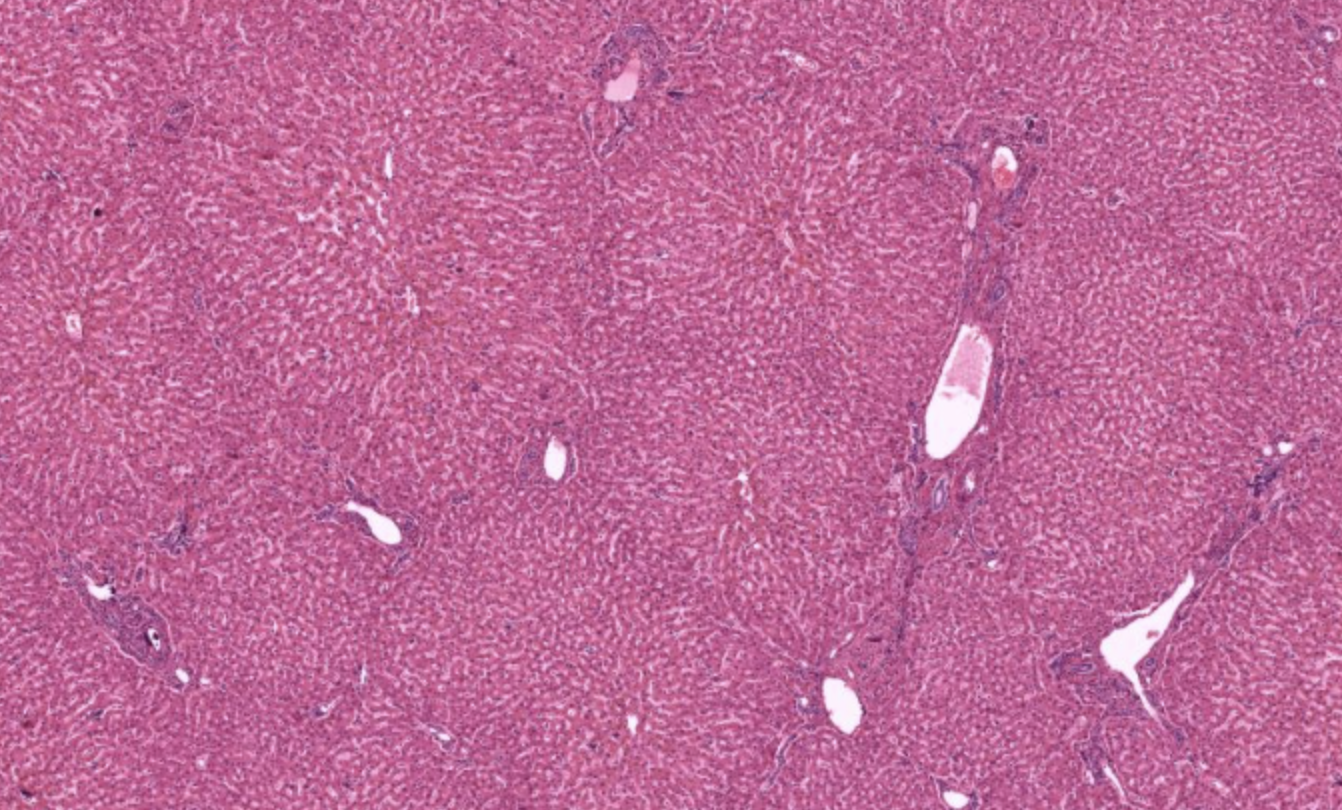
Lobules in Liver
Transports the bile made by the liver cells to the gallbladder and duodenum via common bile duct
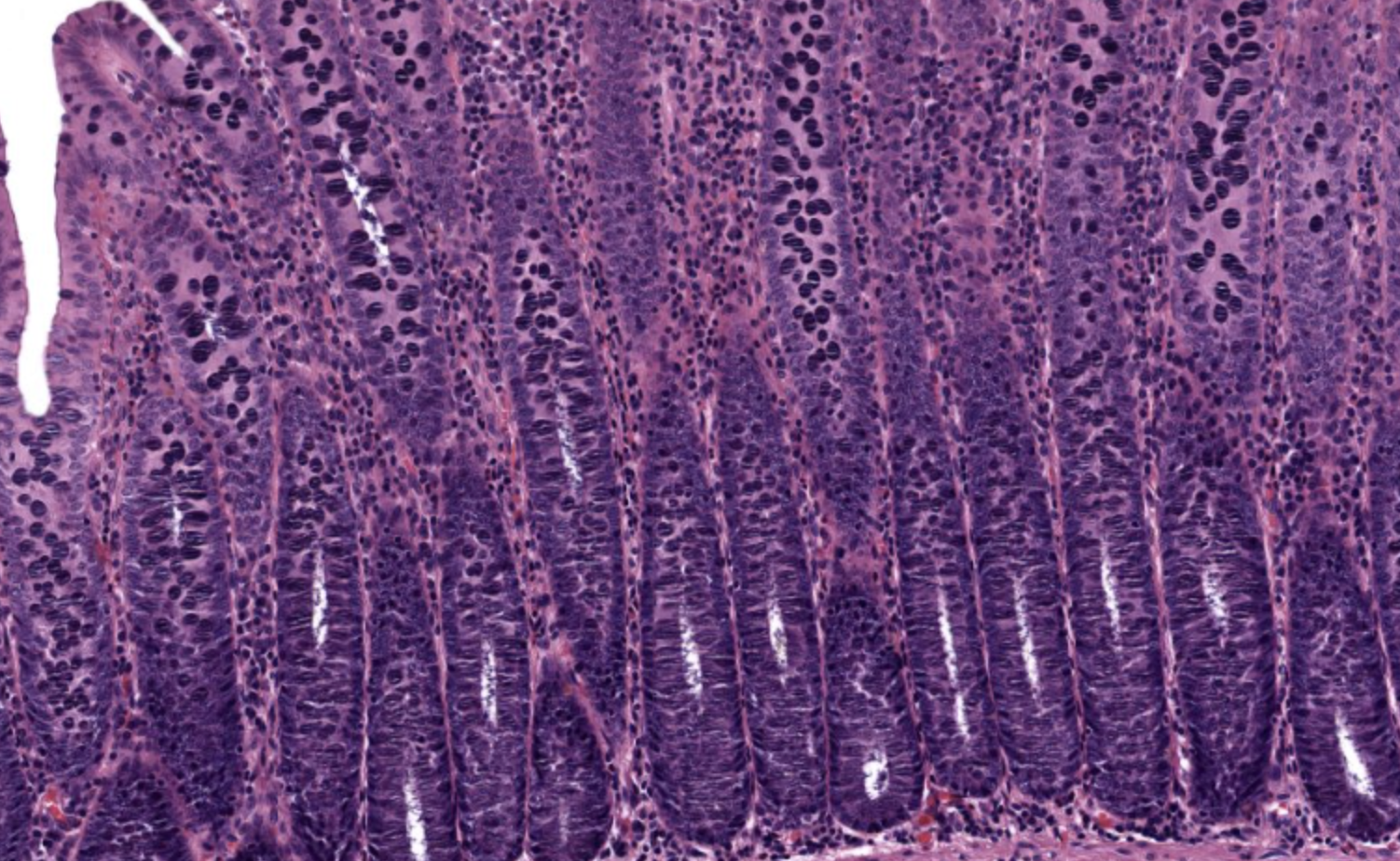
Mucosa in Colon
Absorbs water and electrolytes from digested foods and to produce mucus that lubricate the fecal material, aiding its passage through the colon.
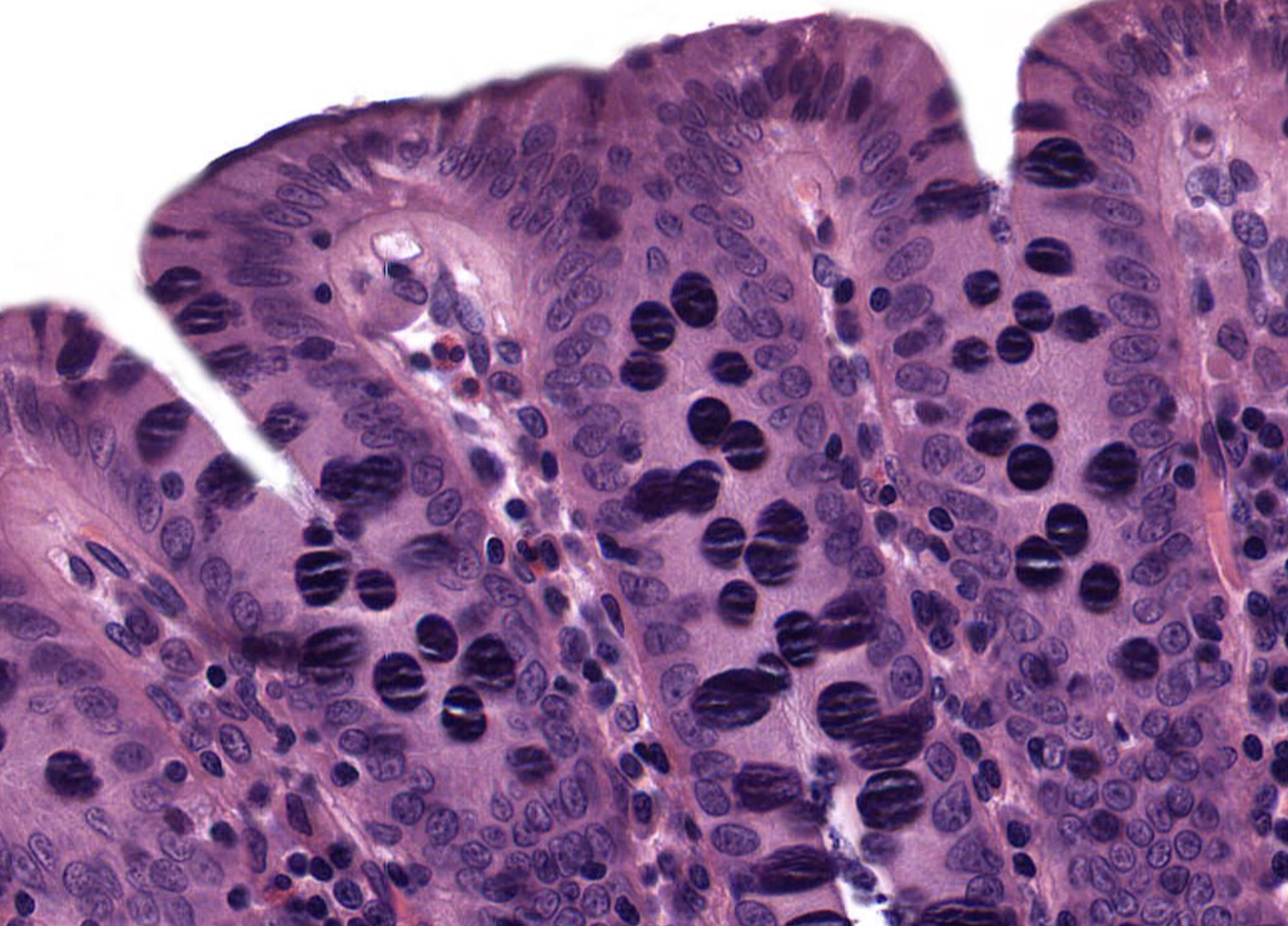
Columnar Epithelium in Colon
Absorbs water and electrolytes
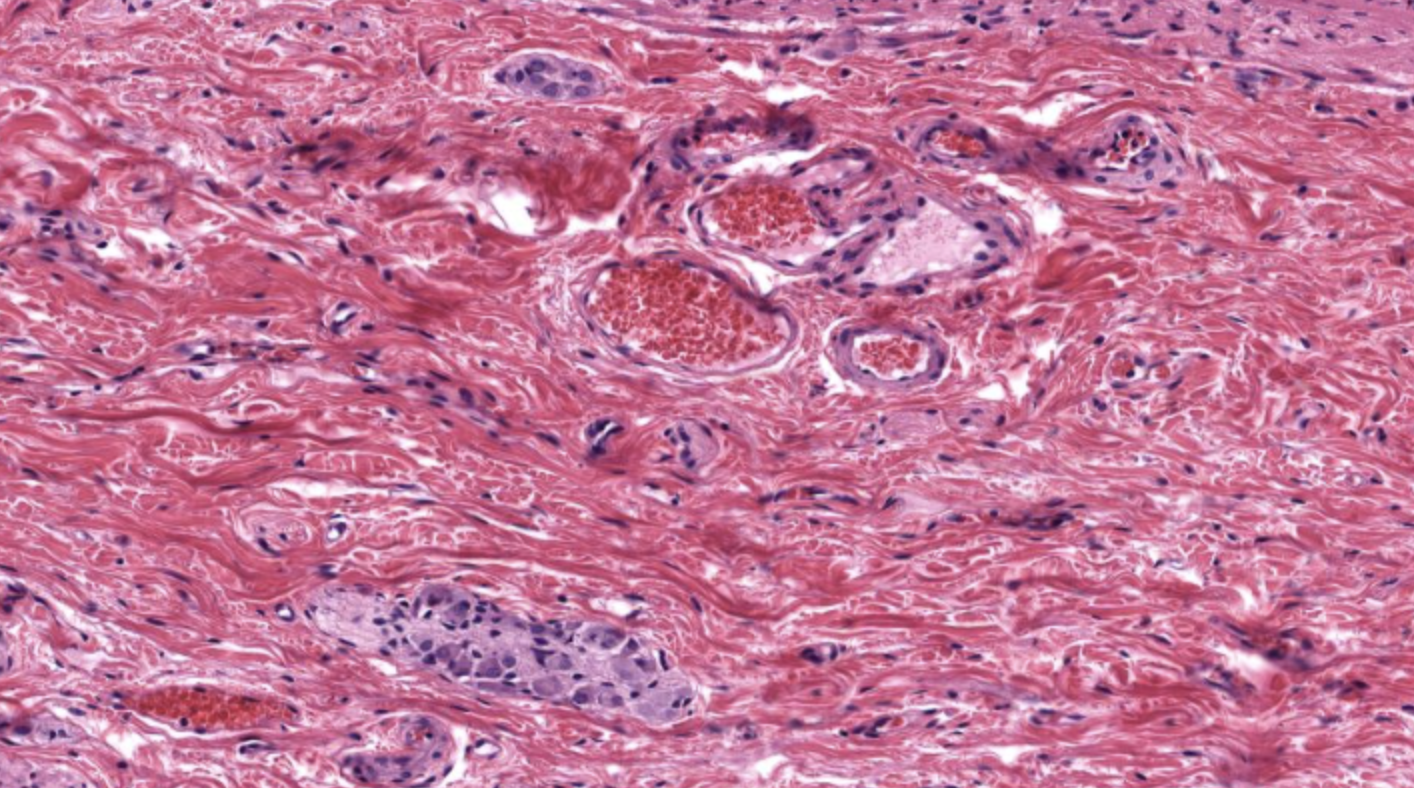
Submucosa in Colon
Provides support for the mucosal layer, contributes to the absorption of nutrients and fluids, and facilitates peristalsis.